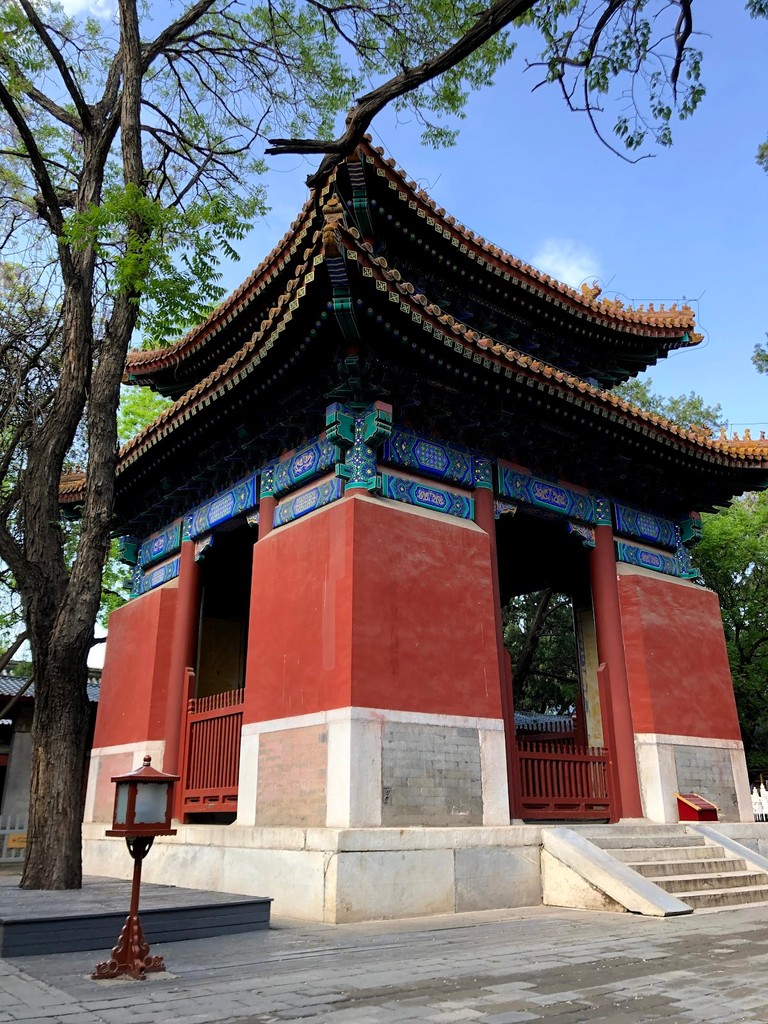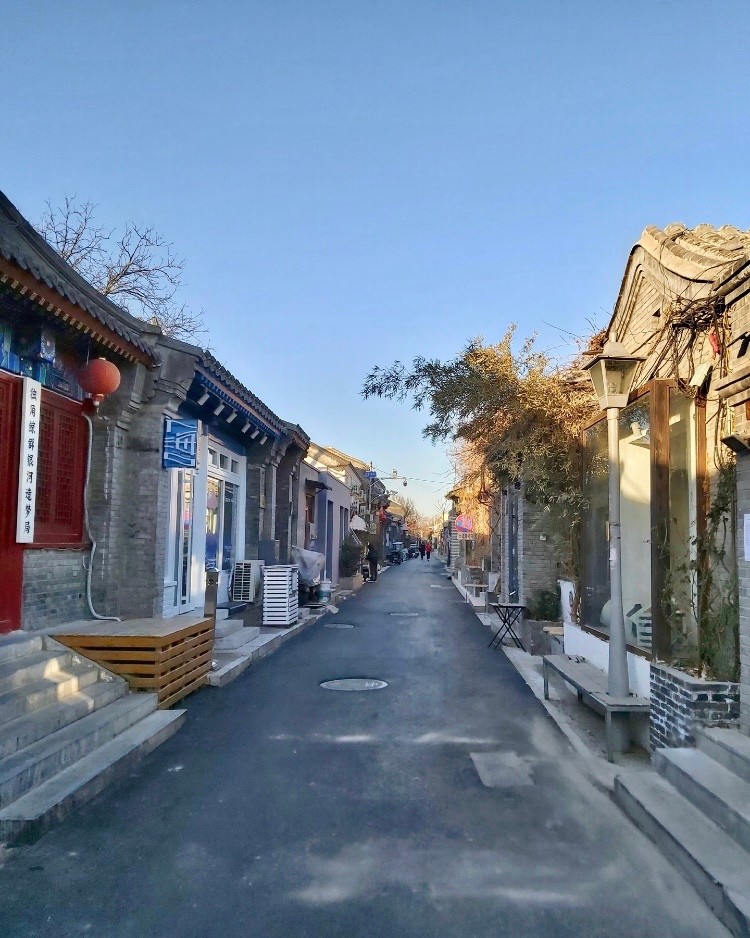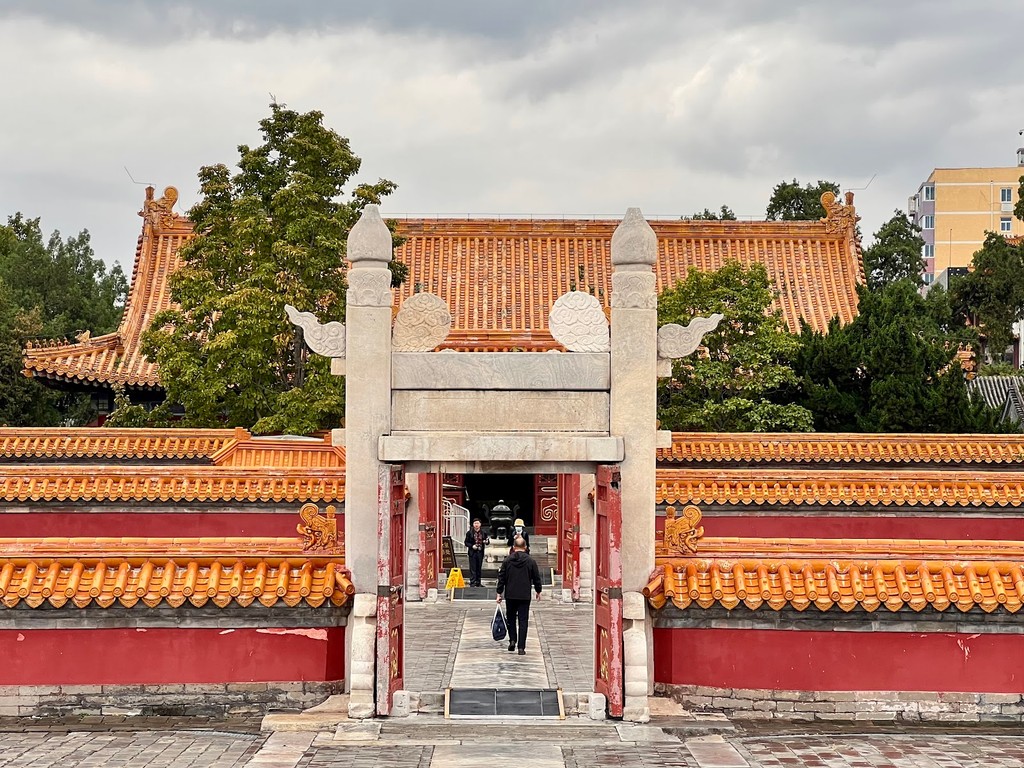Cultural Peaks and Hidden Paths
Join our free walking tour to uncover Beijing's cultural gems and serene landscapes, where history and nature blend seamlessly for an unforgettable experience.
Time
3 Hours
Stops
4 Places
Distance
2.2 km
Lama Temple (Yonghe Temple)
Start your journey at one of Beijing's most renowned Tibetan Buddhist temples, known for its stunning architecture and serene atmosphere.

Lama Temple (Yonghe Temple) (Source: Google Maps)
The Lama Temple, or Yonghe Temple, is a spectacular Tibetan Buddhist temple that dates back to the Qing Dynasty. Originally constructed in 1694 as a prince's residence, it was converted into a temple in 1744. The temple is a stunning example of traditional Chinese architecture, featuring intricate carvings, vibrant colors, and ornate roofs. Visitors are often captivated by the 26-meter tall statue of Maitreya Buddha, carved from a single sandalwood tree, which is housed within the temple. The serene atmosphere, enhanced by the scent of incense and the sound of chanting monks, offers a unique glimpse into Tibetan Buddhism. The temple complex is not only a place of worship but also a cultural hub, attracting both locals and tourists who come to appreciate its spiritual significance and architectural beauty.
Confucius Temple and Imperial College Museum
Just a short walk from the Lama Temple, explore the Confucius Temple and learn about the history and philosophy of Confucianism.

Confucius Temple and Imperial College Museum (Source: Google Maps)
The Confucius Temple, established in 1302, is one of the largest and best-preserved Confucian temples in China. This temple was dedicated to Confucius, the great philosopher and educator whose teachings have shaped Chinese culture for centuries. The architecture showcases classical Chinese design, with elegant courtyards and beautifully crafted stone tablets inscribed with Confucian classics. Adjacent to the temple is the Imperial College Museum, which was once the highest educational institution in ancient China. Here, scholars studied Confucian texts and prepared for the imperial examinations. The museum houses various artifacts, including ancient books, tools, and educational materials, providing insight into the historical significance of Confucian education. Together, these sites offer a deep understanding of Confucian philosophy and its enduring influence on Chinese society.
Wudaoying Hutong
Wander through this charming and historic hutong, offering a glimpse into traditional Beijing life with its narrow alleys and courtyard homes.

Wudaoying Hutong (Source: Google Maps)
Wudaoying Hutong is a picturesque alleyway that embodies the charm of traditional Beijing life. This historic hutong, with its narrow lanes and courtyard homes, dates back to the Yuan Dynasty and has maintained its cultural heritage over the centuries. As you stroll through the hutong, you’ll encounter quaint shops, local eateries, and art galleries, all housed in beautifully preserved buildings. The area reflects the lifestyle of Beijingers, showcasing everyday activities and the warmth of community life. Many of the homes are adorned with decorative door knockers and vibrant flower pots, adding to the neighborhood's aesthetic appeal. Wudaoying Hutong serves as a reminder of Beijing's rich history and cultural identity, providing visitors with a unique opportunity to experience the authentic atmosphere of the city away from the bustling tourist spots.
Ditan Park (Temple of Earth)
Visit this tranquil park, which was used for imperial sacrifices to the Earth God, and enjoy its peaceful gardens and historical significance.

Ditan Park (Temple of Earth) (Source: Google Maps)
Ditan Park, or the Temple of Earth, is a historic park that was once a site for imperial sacrifices to the Earth God during the Ming and Qing Dynasties. Established in 1530, the park is designed in accordance with ancient Chinese cosmology, symbolizing the relationship between heaven and earth. The park features a striking altar and beautiful gardens, offering a peaceful escape from the city's hustle and bustle. Visitors can explore the lush greenery and enjoy the tranquility that the park provides. The main altar, a circular mound, is an impressive architectural feature that reflects traditional Chinese design principles. Ditan Park is also a popular spot for locals to practice tai chi, engage in traditional games, and enjoy leisurely walks, showcasing the harmonious blend of history and modern life in Beijing.

Your travels, your rules.
Create your own Free Walking Tours.
Set your preferences, distances and anything you want to do or see.
Completely free, no payment required.